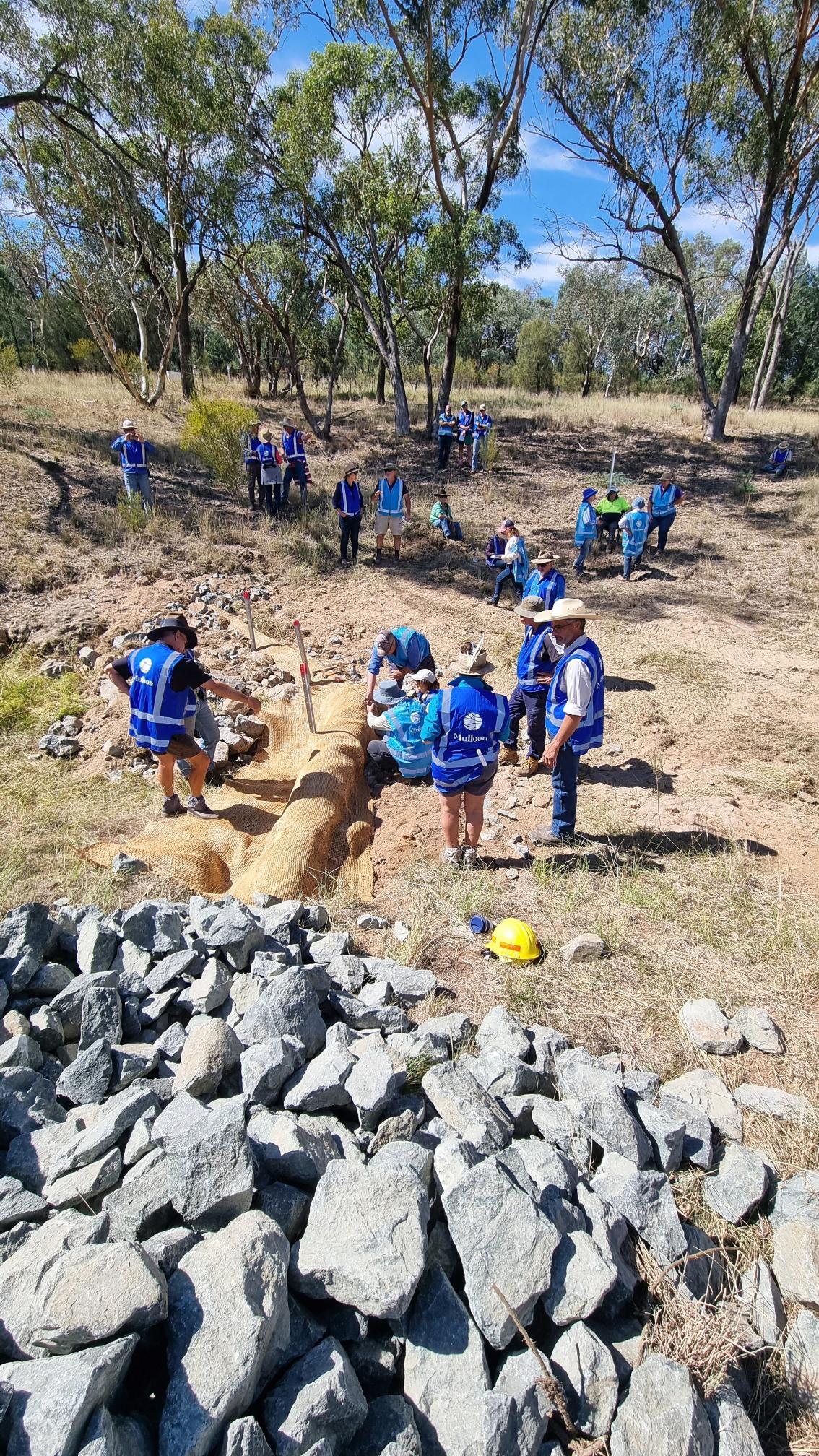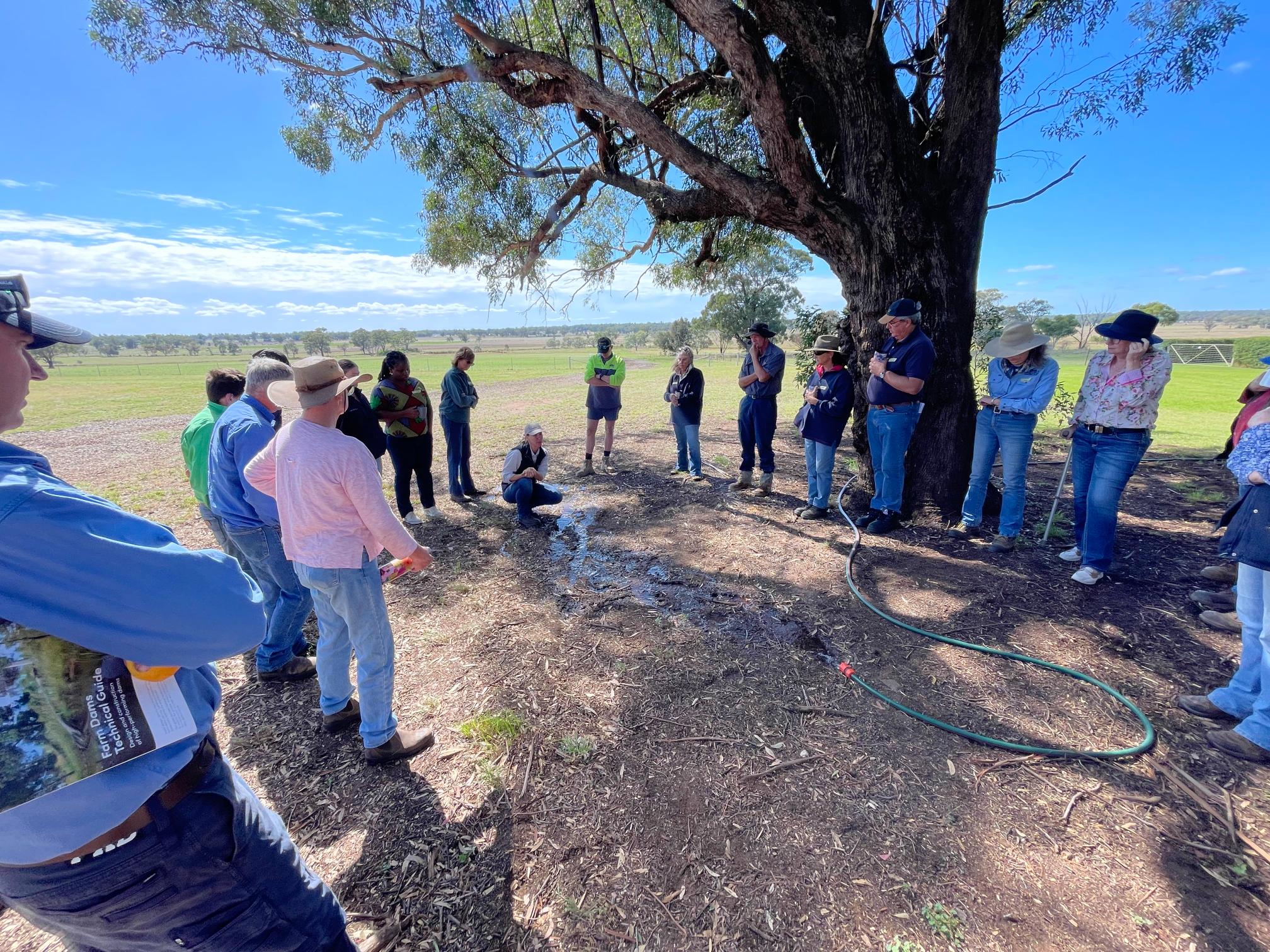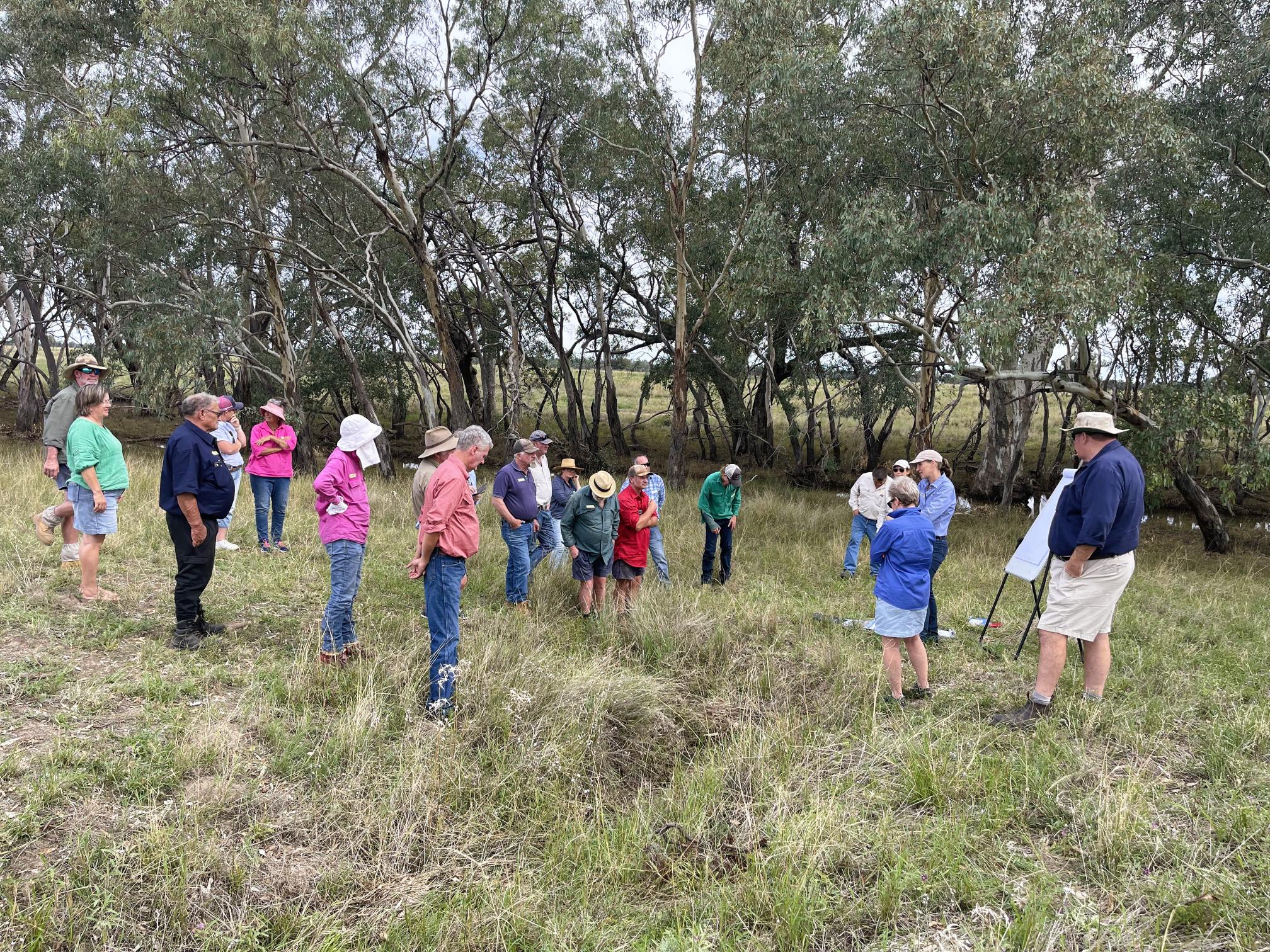At Gulargambone and Dubbo, Penny spoke about the impact of gravity and solar energy on landscapes and the role of plants in managing these forces. We then headed out on foot to read landscape patterns and processes and discuss how these concepts show up in the real world. We also spoke about where interventions might be useful, and how landholders can prioritise actions, starting outside of their waterways.
At Eugowra, participants saw firsthand the key in-stream interventions that can help dissipate the high energy flows that cut through the upper catchment and how rehydrating the landscape can help reduce flash flooding downstream. Tony demonstrated the critical role of engineering design when constructing a log sill and rock weir, before the group got stuck in together building brush mattresses and packs – simple, practical tools that landholders can take home and use straight away to tackle erosion. The team also talked through the use of photo-point monitoring stakes to help track changes in landscape function over time.
Pictured left: Construction of log sill and rock in Eugowra


